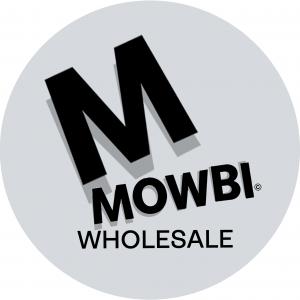Want to Build a Business Fast Using a Video Marketing Sales Funnel?
— Paul DeBellis
MOORESVILLE, NC, UNITED STATES, June 29, 2023/EINPresswire.com/ — Learn How To 5x Any Business Using Sales Funnels
Funnels are an essential component of any successful marketing strategy that can help target high ticket clients, build effective lead capture pages, create compelling offers, and generate more revenue.
Building a successful sales funnel is crucial for any business looking to grow and scale. A sales funnel is essentially a series of steps that guides potential customers towards making a purchase. The goal is to convert leads into paying customers by providing them with valuable information and offers.
The first step in building a successful sales funnel is to identify a target audience. Who trying to sell to? What are their pain points, needs, and desires? Understanding a target audience will help create messaging that resonates with them and ultimately drives conversions.
Once identifying a target audience, the next step is to map out the customer journey. This involves identifying all the touchpoints where potential customers interact with your brand – from social media ads, landing pages, opt-in forms, email campaigns, etc.
One key component of an effective sales funnel is offering valuable content at each stage of the customer journey. This can include videos, blog posts or lead magnets like a video series or mini workshops that provide helpful insights or solutions related to your product or service.
Another essential element of a successful sales funnel is designing an attractive lead capture page which prompts visitors for their contact information in exchange for access to exclusive content or offers.
It’s important not only implement tracking mechanisms on each stage (to measure success), but also continuously test various elements such as headlines copywriting , images , CTA buttons among other features until achieving optimal results .
What are the Key Components of a Funnel?
A funnel is a marketing tool that helps businesses turn prospects into paying customers. The key components of a funnel include the lead magnet, tripwire offer, core offer, and profit maximizer.
The lead magnet is an incentive offered to potential customers in exchange for their contact information. This can be in the form of a free 30 minute discovery call, webinar, workshop or video series.
The tripwire offer is usually a low-cost product designed to convert leads into buyers. This could be an introductory course or software trial.
The core offer is the main product being sold by your business. It should provide significant value and solve your customer’s problems.
The profit maximizer offers additional products or services that complement your core offering. These can range from upsells to premium packages that meet the needs of high-end clients.
By utilizing these key components effectively within your funnel strategy it will create an efficient sales system that converts more leads into paying customers while simultaneously increasing profitability for your business over time!
How to Design an Effective Lead Capture Page
Designing an effective lead capture page is essential to the success of your sales funnel. Your lead capture page should be eye-catching, persuasive and informative enough to convince potential clients to provide their contact information willingly.
The first step in designing a great lead capture page is identifying your target audience. You need to understand what makes them tick, their pain points, desires and needs before crafting a message that resonates with them.
Ensure you use clear and concise language on your lead capture page. Avoid using complex jargon or buzzwords that may confuse or turn off potential leads.
Your offer must also be compelling enough for visitors to take action. Consider offering something valuable like a 30 minute discovery call, free webinar, free trial or discount code in exchange for their contact details.
Optimizing your opt-in form is equally important as creating convincing copywriting. Make sure it’s easy to fill out and doesn’t require too much information from users.
Include attention-grabbing visuals such as videos or images related to the offer you’re giving away on this page. It can help add personality and trustworthiness while keeping visitors engaged longer.
Creating a Follow-up Email Sequence
Creating a follow-up email sequence is an essential part of any successful funnel. After capturing leads through your lead capture page, it’s crucial to nurture those leads and guide them towards making a purchase.
The first step in creating a follow-up email sequence is determining the frequency of emails you want to send. You don’t want to bombard your leads with too many emails, but you also don’t want them to forget about you. Strike a balance that works for your business and audience.
Next, focus on crafting engaging subject lines that grab attention and entice open rates. Personalization can go a long way in increasing open rates. Use the recipient’s name or reference their specific interests based on data collected from opt-in forms.
When writing the body of emails, keep them concise and easy-to-read while still providing value. Share helpful tips or information related to your industry that positions you as an expert.
Incorporating videos into your follow-up email sequence can also be highly effective in building trust with potential customers.
Always include clear calls-to-action (CTAs) throughout each email to encourage click-throughs and ultimately drive conversions down the funnel path.
Testing and Tracking your Results
Once setting up your sales funnel, the work is not done. The key to success lies in testing and tracking the results. This allows to identify what is working well and what needs improvement.
To begin with, establish a baseline for your metrics. These could include conversion rates, click-through rates, email open rates etc. Then start testing different variations of your funnel components such as lead pages or email sequences.
A/B split testing can be used to test two versions and compare the performance of each. This will give an idea of which version resonates better with a target audience.
Another important aspect of tracking results is analyzing where traffic comes from and how it behaves on different parts of the funnel. Use tools like Google Analytics to track user behavior on your website.
It’s important to stay patient during this process – it may take several rounds of testing before finding the right combination that works best for your business goals. And always remember: Data doesn’t lie!
For More Information Check Out our Websites and Contact Us Today
Paul DeBellis
Debellis Enterprises LLC
+1 704-840-4820
[email protected]
Visit us on social media:
Facebook
Twitter
LinkedIn
Instagram
YouTube
Sales Funnels
![]()
Originally published at https://www.einpresswire.com/article/642184169/entrepreneur-paul-debellis-launches-digital-marketing-workshops-creating-sales-funnels-that-convert-to-new-clients





